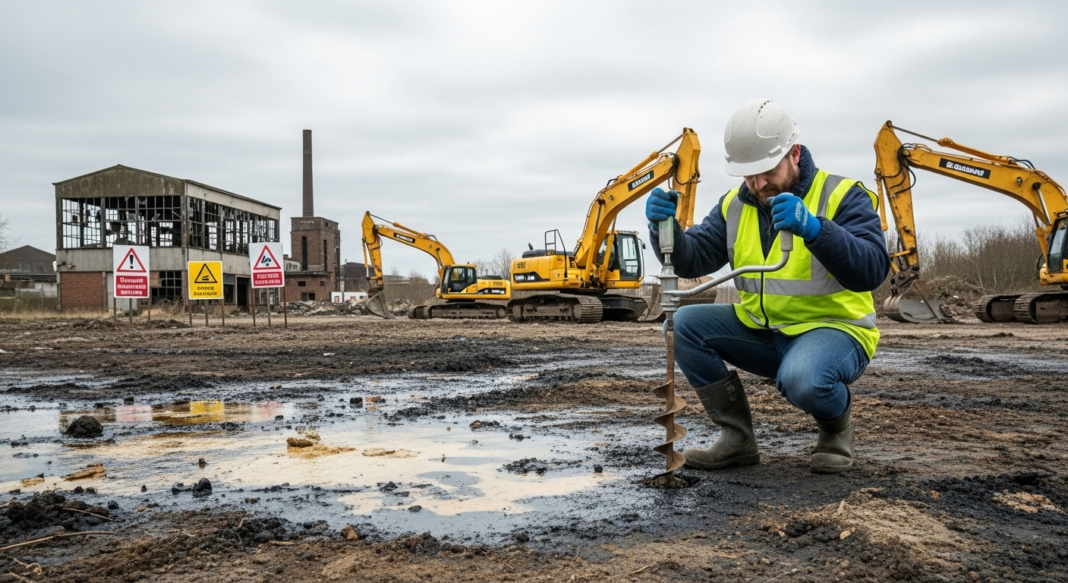When land is being developed, sold, or repurposed, one of the most crucial steps is determining whether the site is safe and fit for its intended use. Hidden beneath the surface, soil and groundwater contamination can pose risks to human health, local ecosystems, and the future value of a property. That’s where environmental surveys for contaminated land come in. These surveys help landowners, developers, and regulators understand the true condition of a site and create pathways for remediation and compliance.
Why Environmental Surveys for Contaminated Land Matter
Every parcel of land has a story. Some were once home to factories, fuel depots, dry cleaners, or agricultural operations, each of which may have left behind harmful substances. Without an environmental survey, these risks remain invisible until they create costly problems. Environmental surveys for contaminated land give stakeholders the clarity they need to manage risks responsibly. By identifying pollutants early, organizations can prevent legal disputes, safeguard public health, and ensure projects meet regulatory standards.
Understanding the Role of Regulation
Governments have strict frameworks in place to protect people and the environment from exposure to hazardous materials. Developers and property owners are often legally required to investigate and, if necessary, clean up contamination before a site can be redeveloped. Environmental surveys for contaminated land serve as the bridge between raw site conditions and regulatory expectations. Without them, organizations risk fines, lawsuits, or halted projects due to non-compliance. By aligning with environmental regulations from the outset, surveys provide not just legal protection but also peace of mind.
The Human Impact Behind Compliance
While regulations can sometimes feel like paperwork and red tape, their purpose is deeply human. They protect communities from drinking polluted groundwater, children from playing in contaminated soil, and wildlife from being exposed to toxic chemicals. Environmental surveys for contaminated land ensure these safeguards are taken seriously. Compliance is more than just ticking boxes—it is about building trust with the surrounding community and ensuring that development projects leave a positive legacy instead of hidden hazards.
The Process of Environmental Surveys
An environmental survey is a structured process, usually completed in stages. The first stage is often a desk-based review of the site’s history, examining past uses that could indicate contamination. For example, if records show that the site once stored fuel tanks, surveyors know to investigate for petroleum hydrocarbons. The second stage involves on-site inspections, including soil and groundwater sampling, to confirm whether contaminants are present. These steps help create a detailed picture of the site’s condition. Environmental surveys for contaminated land don’t just identify risks—they provide data that guides practical solutions.
Building Trust Through Transparency
For developers, one of the greatest benefits of conducting environmental surveys for contaminated land is the trust it builds with stakeholders. Investors, regulators, and community members all want assurance that a project is safe and responsible. Sharing the findings of surveys and outlining remediation plans shows a commitment to doing the right thing. This transparency reduces conflicts, accelerates approvals, and enhances the reputation of the organization behind the development.
The Cost of Neglecting Surveys
Skipping or rushing an environmental survey can lead to significant consequences. Contamination discovered late in a project can cause expensive delays, force redesigns, or even stop development entirely. Beyond financial losses, neglecting environmental surveys for contaminated land can expose organizations to lawsuits from affected neighbors or future property owners. The reputational damage from being associated with contamination can also linger for years. Investing in proper surveys at the start of a project is a fraction of the cost of cleaning up a crisis later.
Turning Risks Into Opportunities
While contamination may initially sound like a setback, identifying it through surveys can actually create opportunities. With the right remediation strategies, contaminated land can be transformed into safe, usable, and even thriving spaces. Many brownfield sites that once posed health hazards are now home to schools, parks, and commercial centers. Environmental surveys for contaminated land provide the roadmap for turning risky sites into valuable community assets. They give decision-makers the knowledge needed to move forward with confidence.
Supporting Sustainable Development
Sustainability is no longer just a buzzword; it is an expectation from communities, governments, and investors alike. Conducting thorough environmental surveys for contaminated land aligns directly with sustainable development goals. These surveys ensure that land use decisions account for environmental protection, public health, and long-term resilience. By integrating compliance into sustainability strategies, organizations demonstrate responsibility not just to regulators, but to future generations.
The Human Element in Technical Work
It is easy to think of environmental surveys as purely technical exercises—soil samples, chemical analyses, and compliance reports. Yet at their heart, these surveys are about people. They protect families who live nearby, workers who may build on the site, and children who might one day play on that land. When survey teams dig into the soil, they are also digging into questions of safety, trust, and stewardship. Environmental surveys for contaminated land remind us that behind every regulation and every data point is a community depending on the right choices being made.
Looking Ahead
As industries evolve and land is reused in new ways, the importance of understanding site conditions will only grow. Environmental surveys for contaminated land will remain central to this process, providing the knowledge and assurance needed to balance development with protection. By embracing these surveys not as obstacles but as tools, stakeholders can ensure their projects stand on solid ground—literally and figuratively.
Conclusion
Environmental surveys for contaminated land are more than compliance checks; they are instruments of responsibility and care. They help organizations uncover hidden risks, meet regulatory requirements, and build trust with the communities they serve. Above all, they ensure that development contributes positively to both people and the planet. By prioritizing thorough surveys and responsible action, landowners and developers can create safer, cleaner, and more sustainable environments for generations to come.


